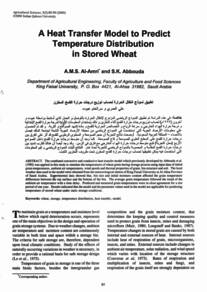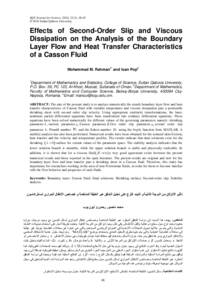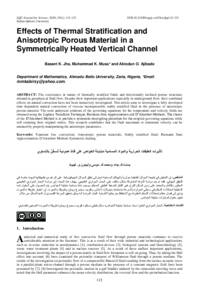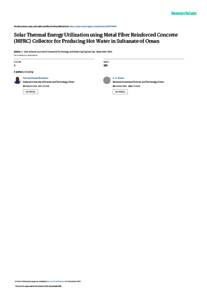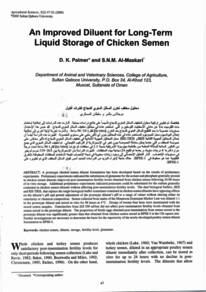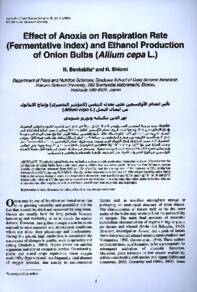Document
A Heat transfer model to predict temperature distribution in stored wheat.
Contributors
Abbouda, S. K., Author
Publisher
Sultan Qaboos university
Gregorian
2000
Language
English
English abstract
The combined convective and conductive heat transfer model which previously developed by Abbouda et al. (1992) was applied in this study to simulate the temperatures of wheat grain during storage process using input data of initial grain temperatures, ambient air temperatures, wind speeds and thermal properties of grain, bin structure and soil. The local weather data used in the model were obtained from the meteorological station of King Faisal University at Al-Ahsa Province of Saudi Arabia. Experimental data showed that, bin size and initial moisture content affected the grain temperature differences between the top surface and the bottom of the bin. The average grain temperature followed the trend of the ambient air temperature with a time delay. Predicted and measured grain temperatures were in close agreement for a test period of one year. Results indicated that the model and the parameter values used in the model are applicable for predicting temperature of stored wheat under static storage conditions.
Member of
ISSN
2410-1079
Resource URL
Citation
Alamri, A. M. S., & Abbouda, S. K. (2000). A Heat transfer model to predict temperature distribution in stored wheat. Journal of Agricultural and Marian Sciences, 5 (2), 85-90.
Arabic abstract
في هذه الدراسة تم تطبيق النموذج الرياضي المزدوج لانتقال الحرارة بالتوصيل والحمل الذي أستنبط بواسطة عبوده وآخرون (1992 م) لحساب توزيع درجات حرارة القمح أثناء التخزين وذلك باستخدام المعلومات الأولية لدرجة حرارة القمح الإبتدائية ودرجة حرارة الهواء الخارجي وسرعة الرياح والخصائص الحرارية للقمح ومادة تشييد الصوامع والتربة. ولقد تم الحصول على معلومات الأرصاد الجوية التي استخدمت في النموذج الرياضي من محطة الأرصاد الجوية التابعة لجامعة الملك فيصل بالأحساء - المملكة العربية السعودية. أوضحت نتائج التجربة أن حجم الصومعة والمحتوى الرطوبي للقمح قد أثر على الفرق بين درجات حرارة القمح على السطح العلوي للصومعة وقاع الصومعة. كما وجد أن متوسط درجات حرارة القمح داخل الصوامع الأربع (محل التجربة) تتبع متوسط درجات حرارة الهواء الخارجي مع فارق في الزمن. وقد وجد أيضا أن هناك تقارب شديد بين درجات حرارة القمح المقاسة والمحسوبة بالنموذج الرياضي للتجربة لمدة عام، النتائج أثبتت النموذج الرياضي وقيم المعلومات التي استخدمت فيه يمكن تطبيقها لحساب درجات حرارة القمح المخزن تحت ظروف التخزين الثابت.
Category
Journal articles

